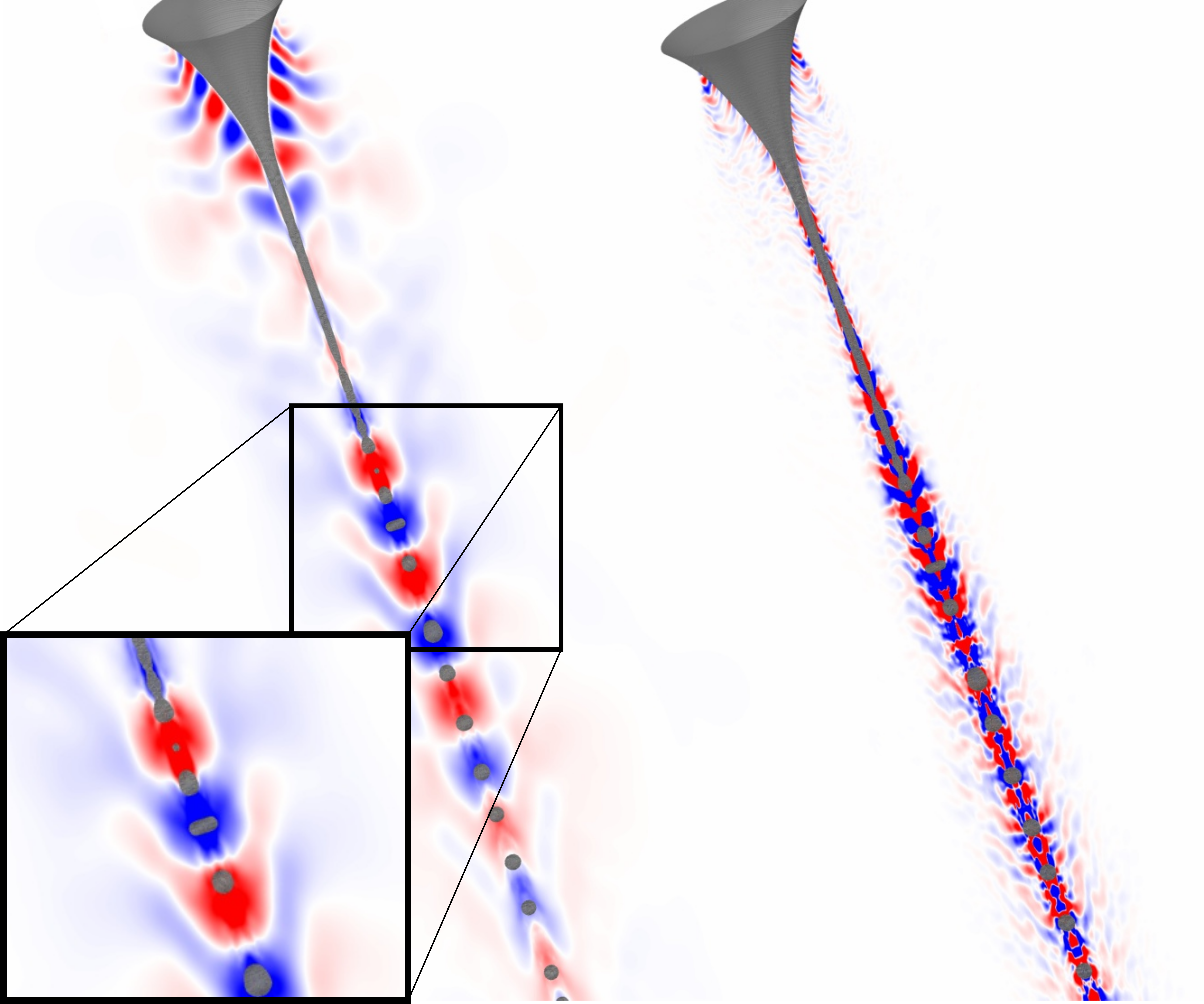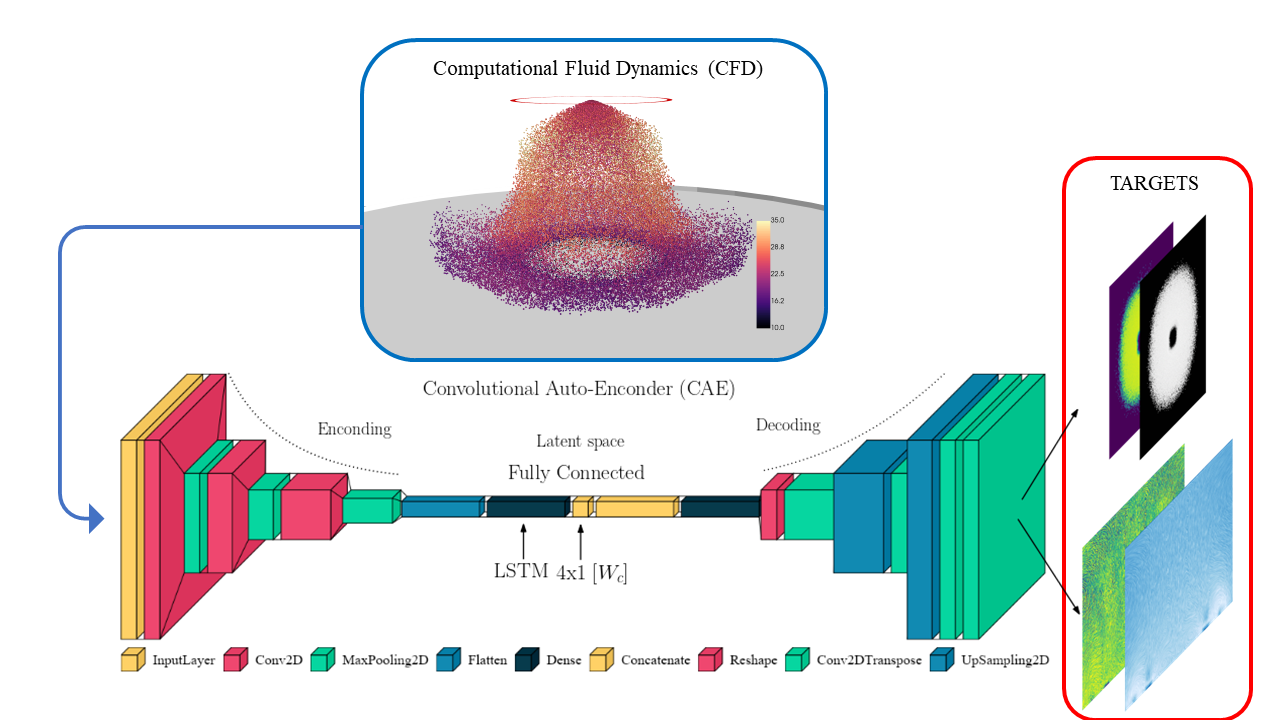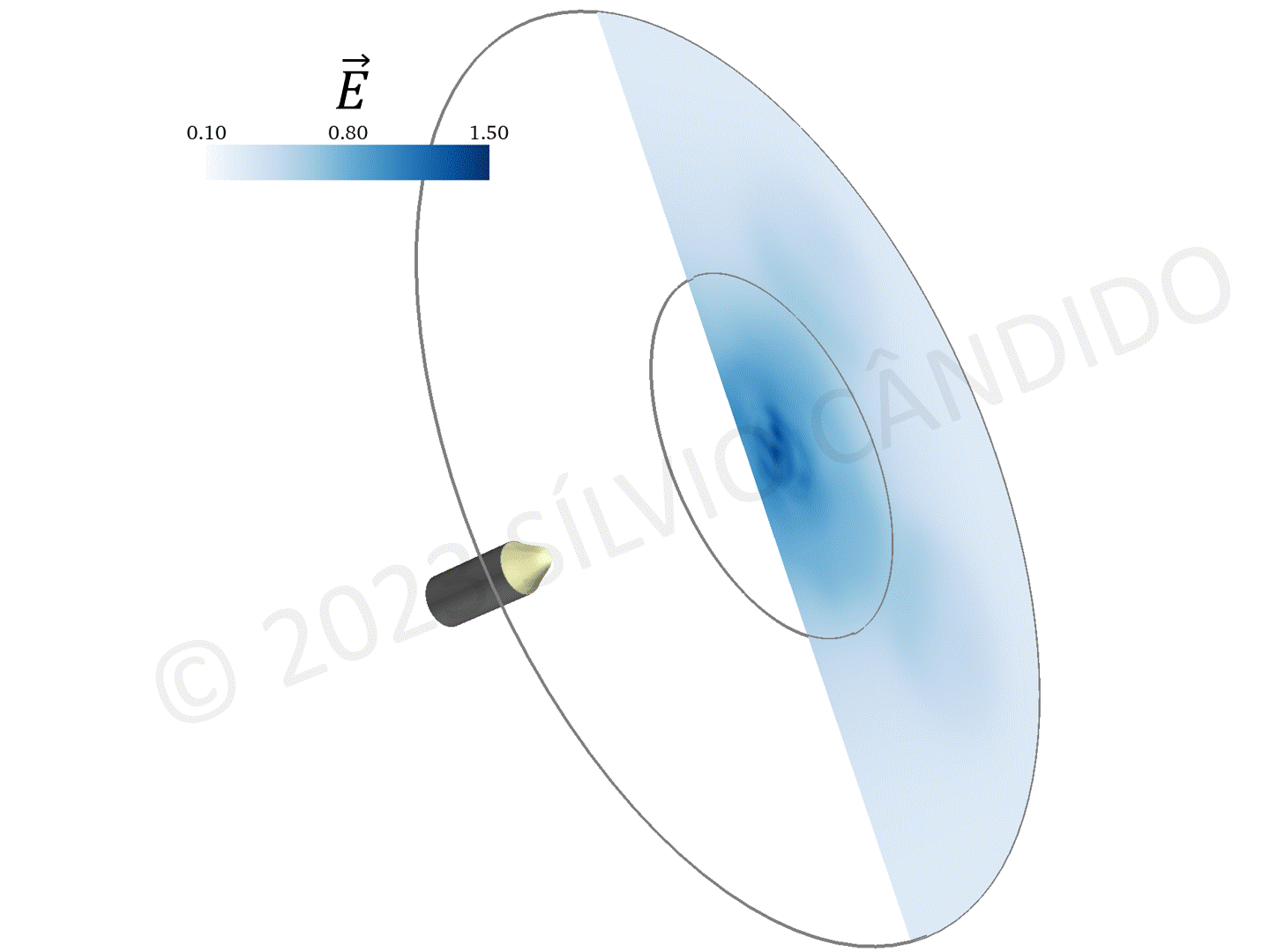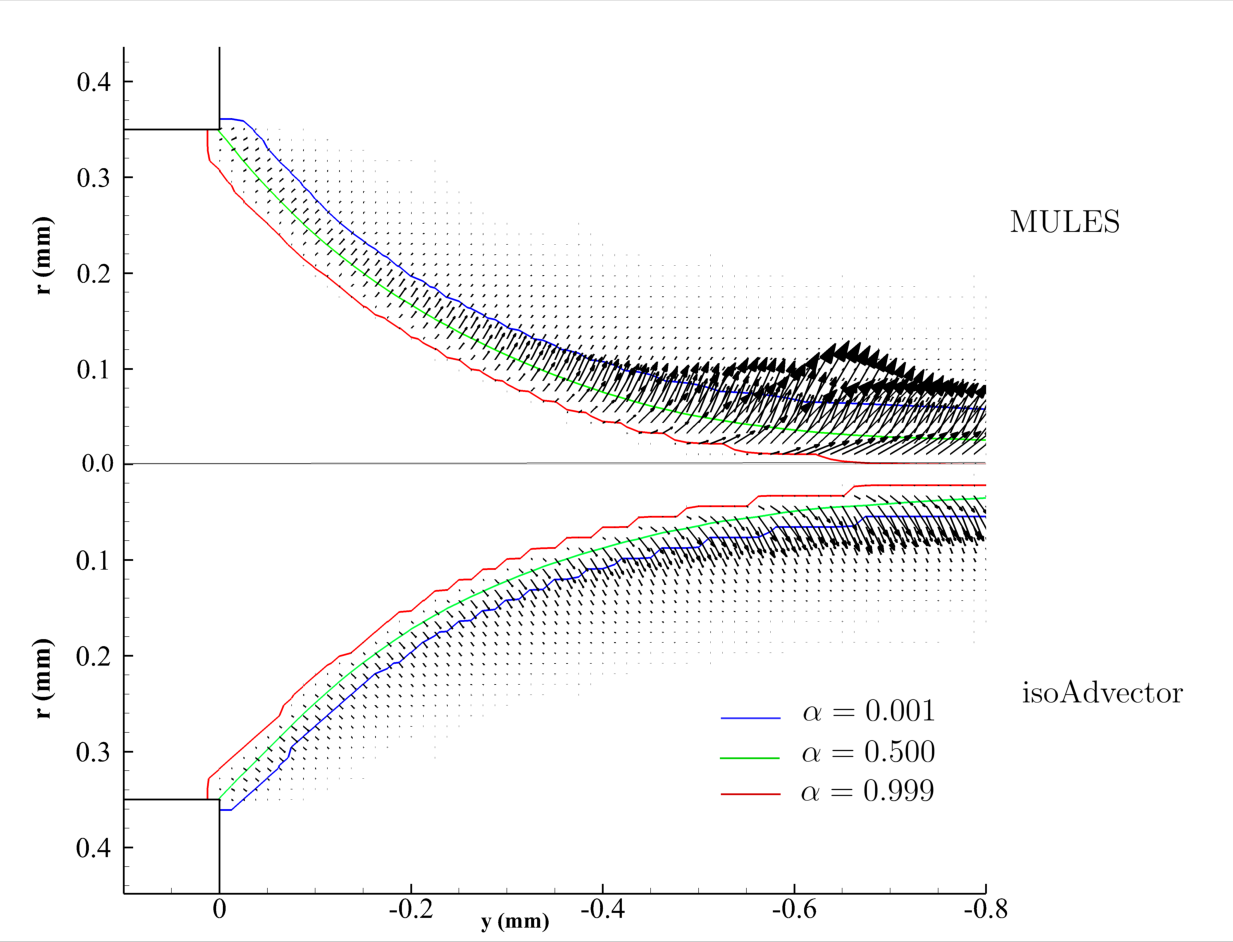On modal decomposition as surrogate for charge-conservative EHD modelling of Taylor Cone jets
Published in International Journal of Engineering Science, 2023
The dynamics of the interface of a fluid jet subjected to an external electrostatic field forming a Taylor cone jet is investigated using a numerical approach. A charge-conservative electrohydrodynamic model is used. In this model, the reduced form of Maxwell’s equations for an electrostatic field, a transport equation for electric charges and the Navier-Stokes equations for a laminar flow are solved. The connection between the electric field and the hydrodynamic flow is established by the Maxwell stress tensor, which ensures the description of the electric surface forces. To analyse the dynamics of the flow, it is proposed to use decomposition methods such as Proper Orthogonal Decomposition (POD) and Dynamic Mode Decomposition (DMD) using snapshots of the flow field. The dynamic structures formed by the velocity field and the dynamics of the electric charge determine the fundamental dynamics of the droplet emission. An analysis of the sensitivity of the modes to the sampling frequency is performed. The influence of different inlet velocities on the decomposition is analysed in the spatial and frequency domain. A reduced-order model (ROM) is interpolated from the base POD, and we demonstrate that it can be used to successfully construct the velocity and electric charge along the field. We anticipate numerous applications of this new type of ROM, such as for accelerating electrohydrodynamic calculations as surrogate models in digital twins. 
Download here



